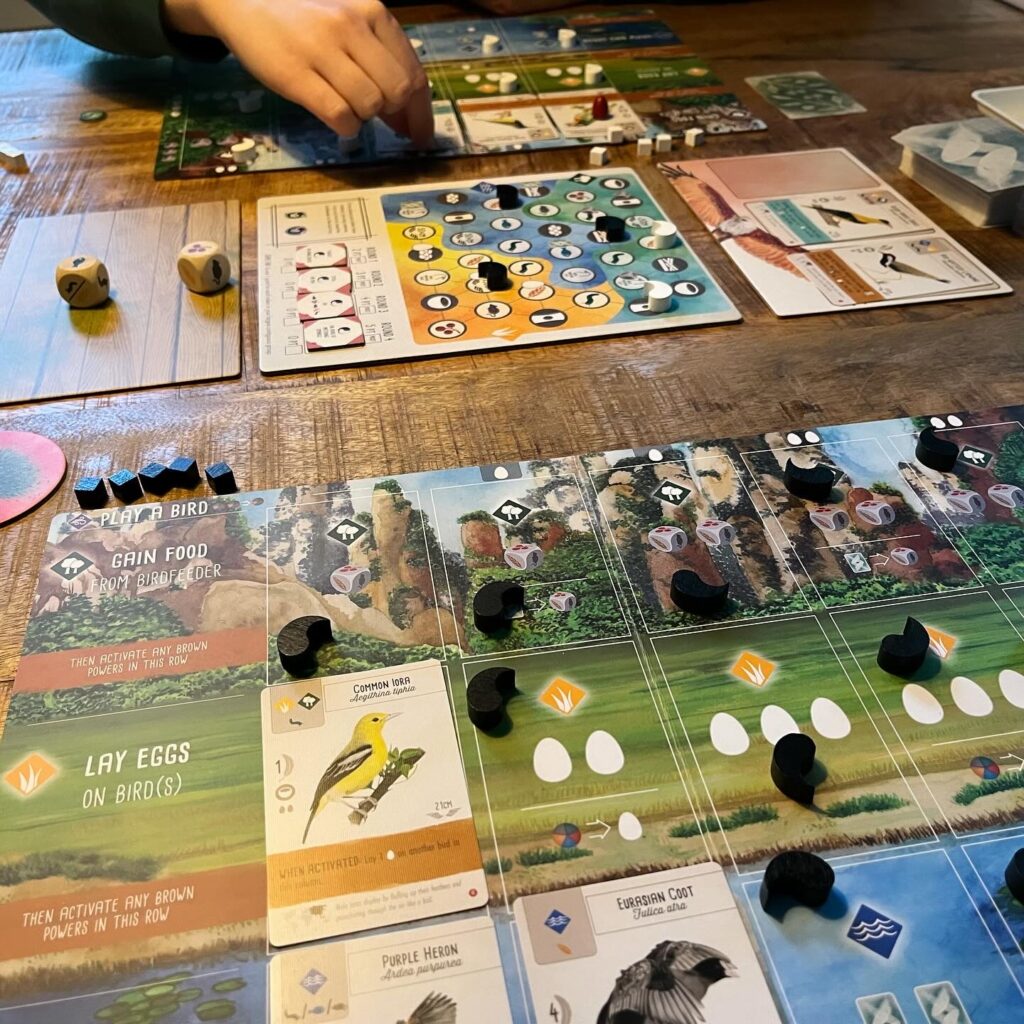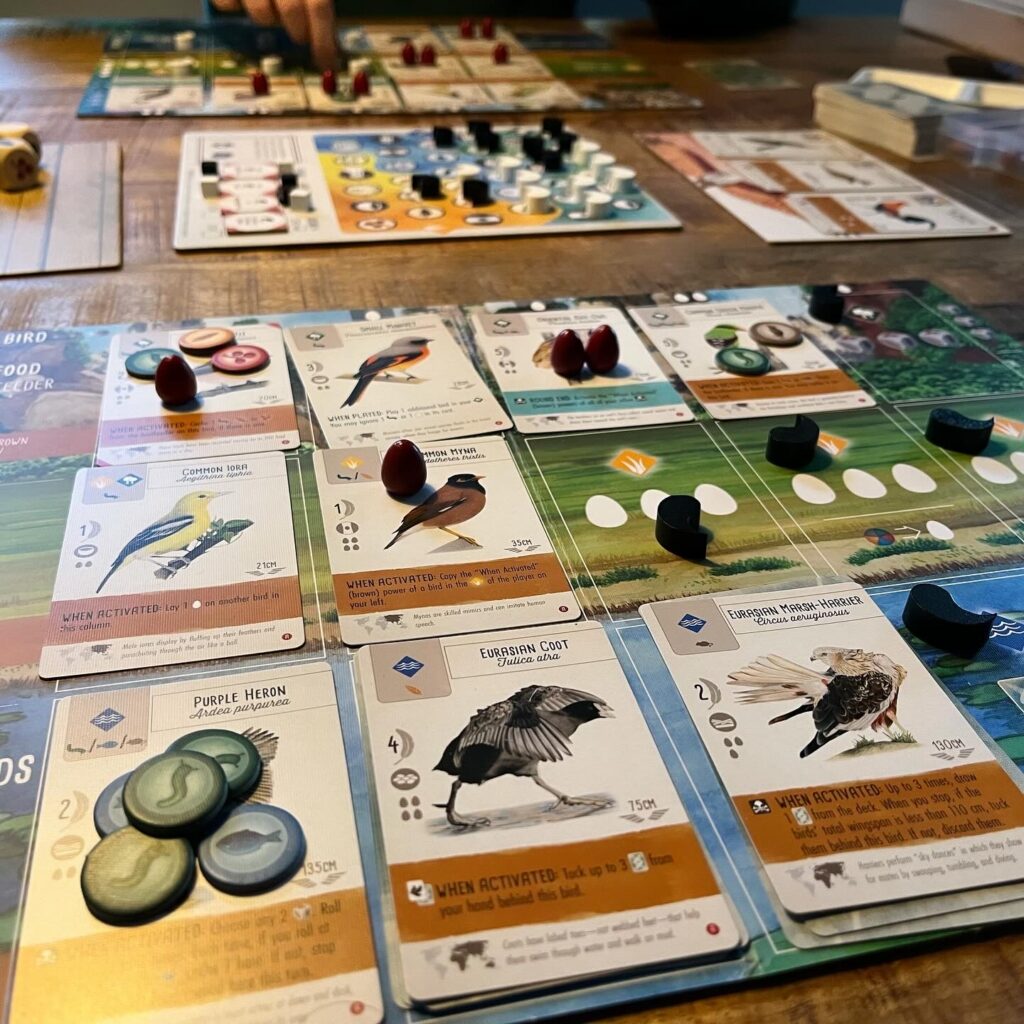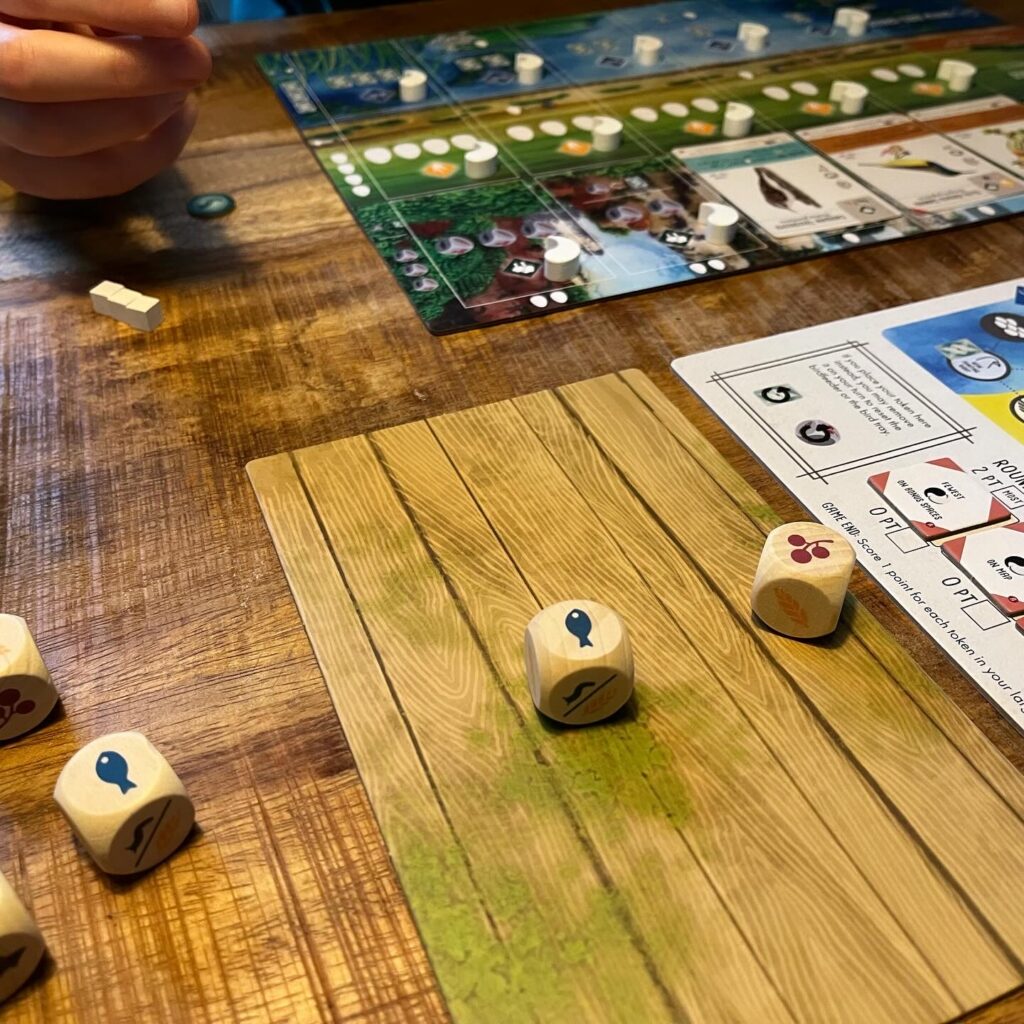Did you know that the blue peacock with its beautiful blue glow and colorful and striking feathers is native to Asia? That bird is definitely something else compared to an ordinary pheasant! Oh wait, that one probably also originated in the east as well… The earth contains many birds in all kinds of different shapes and sizes, and Asia is also home to a lot of special birds. You can meet many of these special birds in Wingspan Asia, an expansion and also a stand-alone game in the world of Wingspan.
Background
Wingspan is a true high-flyer among board games. The game is popular with players just flying out and players who already have more feathers on their wings. Wingspan is a nest full of beautifully illustrated birds, atmosphere and, thanks to the almost countless number of birds, objectives and several expansions, inexhaustibly varied.

Despite having quite a few games of Wingspan under my belt, I haven’t yet encountered all the available birds from both the base game, Europe and Oceania, but there’s always room for more birds in the sky. This time we are going to visit the Asian birds.
You can use Wingspan Asia as a supplement to the base game, but also as a standalone game for two birds of a feather. This is unlike the previous expansions that could only be used as simple expansions.
Wingspan is, in a nutshell, a game where players can take different actions each turn in different rounds of play. Players will thus play bird cards for special bonuses and to improve actions. Players need to carefully plan their actions and more importantly the order of these actions to get the engine of their incubator going and keep it running.


Players choose a section of their player board for an available action each round. Players can place bird cards from their hand play in the appropriate areas, but must pay bird food and possibly eggs to do so. Players can draw bird food (worms, fish, grain, berries and, in Oceania, even nectar) from the bird feeder (the available dice). They can also have their birds lay eggs and finally take new bird cards in hand. Some birds have special actions that activate when you use the action of a specific area, as well as actions that activate right at play or at the end of a round or the game.
Each round players can fulfill goals to get extra points and at the end of the game players get points for birds (and special effects of birds of prey, for example), collected eggs and personal goal cards.
Asia
So what does the Asia expansion add? Again, a lot of new birds, but also some new game modes. Asia includes two additional player boards so you can now play Wingspan with 6 or 7 people. To reduce downtime, the expansion includes parts and rules for a special Flock mode where always 2 players are on the turn (the bird?) at the same time if you want to fly out with a larger group. You do need the base game for the Flock mode.
Duet mode is specifically for two players and for this Asia includes all the parts you need. In the center of the table, players place a central player board with the different areas, fields and a score track for the different shared goals.


The gameplay of Duet is the same as the base game, with a few minor differences. Each time a player places a bird, that player may place a Duet tile of his color on the central board in the same area on a space corresponding to a property of the bird he just placed. Players can thereby earn bonuses and fulfill the objectives for extra points.
Verdict
Asia is once again an essential expansion to the base game due to the fantastic new birds, but Asia is extra special because it can serve as a great introduction because it is a stand-alone game. Duet mode makes the game extra dynamic for two players, offering new variety.



